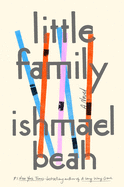
| Publisher: | Riverhead Books | |
| Genre: | Cultural Heritage, Literary, Coming of Age, Fiction | |
| ISBN: | 9780735211773 | |
| Pub Date: | April 2020 | |
| Price: | $27 |
| Fiction |
by Ishmael Beah
Ishmael Beah's third work (A Long Way Gone; Radiance of Tomorrow) is so rife with longing, sorrow and wisdom that it's difficult to swallow in one sitting. Little Family follows five orphans in an unnamed African country (though it's similar to Beah's home country of Sierra Leone), where they survive by sharing. Assembling a home from the skeleton of an abandoned airplane, they spend their days in pursuit of food, money and clothing, which they frequently swipe from the wealthy visitors that crowd the nearby beach. Elimane, the oldest, is a gentle bookworm whose cleverness makes him a natural-born leader. Then there's Ndevui and Kpindi, who act like twins, poking fun at each other while kicking a makeshift soccer ball late into the night. Finally, there's little Namsa, the youngest and sweetest of the bunch, and Khoudiemata, brilliant but not yet sure of her place in the world.
All are reeling from the lives they have lost before they met each other, and they cope by focusing on the task of survival. But when Elimane enters the service of the wealthy William Handkerchief, a man of unknown profession but obvious power, the little group is pulled in different directions. Khoudi, in particular, likes to keep her secrets, and as she grows into a young woman, the lure of the comfortable and wealthy--whom she calls "the beautiful people"--is finally too much to resist.
This is a gorgeous novel, buoyed with the slow, effective rhythm of a legend, but touched with enough relevancy and humor to feel poignant. Beah is a master of young narrators--who are not, in fact, as young as they seem. --Lauren Puckett, freelance writer
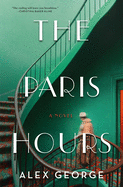
| Publisher: | Flatiron Books | |
| Genre: | General, Literary, Fiction, Historical | |
| ISBN: | 9781250307187 | |
| Pub Date: | May 2020 | |
| Price: | $26.99 |
| Fiction |
by Alex George
Paris is a city of overlapping connections. Each day, the lives of its denizens intertwine in a thousand small ways. In Alex George's glittering third novel, The Paris Hours, the paths of four ordinary people--each searching for something they have lost--become inextricably linked over the course of one day in 1927.
George (Setting Free the Kites) tells his story in brief alternating chapters, following four protagonists: Guillaume, a struggling painter; Souren, an Armenian refugee turned puppeteer; Camille, Marcel Proust's former maid; and Jean-Paul, a journalist laid low by grief. Each of them, in their pursuit of something--money, absolution, a reprieve, a chance to tell a long-buried story--encounters famous American expatriates: Gertrude Stein, Josephine Baker, Ernest Hemingway, Sylvia Beach. But these celebrities are only minor characters, serving to help or hinder George's characters on their quests. Camille saved one of Proust's notebooks for herself when he asked her to burn them; now she is searching the city for it. Guillaume engages in a series of increasingly dangerous negotiations to keep the wolf from his door. Jean-Paul, while profiling other people, longs to tell the one story he keeps closest. And Souren, haunted by his past, tries to find meaning and perhaps forgiveness through his puppet shows. As they move about the city, their paths--unbeknownst to each of them--cross and recross in ways that will have implications for them all.
Compelling and elegantly written, The Paris Hours is a tribute to love, grief and serendipity in the City of Light. --Katie Noah Gibson, blogger at Cakes, Tea and Dreams
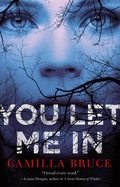
| Publisher: | Tor | |
| Genre: | Psychological, Domestic, Fantasy, Contemporary, Gothic, Thrillers, Fiction | |
| ISBN: | 9781250302045 | |
| Pub Date: | April 2020 | |
| Price: | $25.99 |
| Science Fiction & Fantasy |
by Camilla Bruce
Camilla Bruce twists fae magic with a domestic thriller in her slick debut, You Let Me In. Everyone believes missing prolific novelist Cassandra Tipp is dead. Yet her final manuscript tells two disturbing stories: the one people would rather believe, about an abused girl driven to madness, and the one Cassie dares them to trust, about her faerie companion Pepper-Man, "always in [her], tooth and claw," whose world bled into her own.
Pepper-Man always accompanied Cassie, even if no one else could see. Her mother punished Cassie for hiding his morbid trinkets ("a ring made from deer spine, a necklace of frogs' legs and hawthorn") and blood stains from invisible bites--"traces of [Pepper-Man's] love." Her father, "like a bear, just watched it all." Straddling two worlds, Cassie seems inextricable. Was she spitefully violent toward her hateful sister, or was she counteracting fae curses? Did she kill her husband, or did he just appear to be human when really he was made of twigs enchanted by a spell? Her therapists believed Cassie constructed an alternate world to cope with trauma, but could a place vivid enough to taste be illusion?
Bruce crafts an intricate web of trauma. Pepper-Man embodies the grim specter of abuse cloaked in sweetness. He "bound [Cassie] with powerful shackles," yet she feels loved--a fantastic representation of how victims justify their abusers. Bruce allows the reader indecisiveness: Cassie doesn't evangelize the fae's existence as an unreliable narrator might, only suggesting "one thing being true doesn't mean that the other thing is untrue." Readers will devour every crumb of this story, luscious as fae cake, about a woman empowered to choose what life she lived. --Samantha Zaboski, freelance editor and reviewer
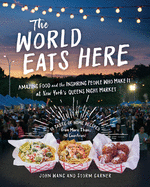
| Publisher: | The Experiment | |
| Genre: | Cooking, General, Regional & Ethnic, Low Budget, Methods, Essays & Narratives | |
| ISBN: | 9781615196630 | |
| Pub Date: | May 2020 | |
| Price: | $19.95 |
| Food & Wine |
by John Wang, Storm Garner
When Texan John Wang moved to New York, he brought a childhood dream with him. While visiting relatives in Taipei, he discovered the night markets where people, "oblivious to the class or cultural divides," ate together. New York City, with its "more than 150 nationalities" and its "skyward cost of living" seemed the perfect spot for a night market that would sell international dishes for no more than five or six dollars, a business where "the target demographic was literally everyone." The World Eats Here is a testimonial to the success of Wang's dream, a cookbook that he and his wife, Storm Garner, wrote together. Its 88 recipes are augmented by Garner's interviews with more than 50 of the people who cook for "nearly fifteen thousand visitors each Saturday night" at the Queens Night Market.
A guy from Flushing tells how to make the perfect sandwich in eight days--that's the time it takes to transform a brisket into pastrami. An Antiguan woman gives her recipe for seafood soup, along with careful instructions for making the ginger beer to go with it. An IT professional divulges the secret to making Portuguese custard tarts, and a Norwegian chef with Cordon Bleu training shares his grandmother's lamb and cabbage stew with potato flatbread.
Along with the recipes are the voices of people from four continents, all bringing their dreams, culture and energy to their new home. Their stories are as nourishing as their food, giving hope that the American Dream is still achievable. --Janet Brown, author and former bookseller
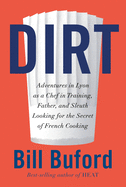
| Publisher: | Knopf | |
| Genre: | Biography & Autobiography, Travel, Cooking, French, Europe, Entertainment & Performing Arts, Regional & Ethnic, France | |
| ISBN: | 9780307271013 | |
| Pub Date: | May 2020 | |
| Price: | $28.95 |
| Food & Wine |
by Bill Buford
Bill Buford, acclaimed writer and amateur cook, embarks on a hilarious and humbling journey into the intimidating world of haute French cuisine in this follow-up to his bestselling Heat.
Long interested in Italian cooking, Buford sets his sights on learning the art of French cuisine, to "make mistakes, be laughed at and debased, and then either surmount or fail." A French restaurant in the United States is no substitute for a restaurant in France, so Buford and his wife, Jessica, successfully deal with the byzantine French bureaucracy, move to France with their twins and settle in the gastronomic capital of Lyon, "a city that knew what is was, whether you liked it or not."
Buford befriends Bob, owner of the local boulangerie; attends L'Institut Bocuse, France's premier cooking school; and is accepted as a stagiaire to join the brigade in an actual French kitchen for the esteemed La Mère Brazier. For 17 days, Buford learns the art of properly peeling a potato (seven cuts with a knife; no more, no less) and making volaille à Noelle, a deboned and reinflated chicken stuffed with meat, vegetables and truffles. His stint also reveals the ugly truth about the vituperative culture of apprenticeship in the French kitchen, complete with pervasive bullying, humiliation and acts of physical and emotional abuse.
Dirt is a frequently funny and always candid account of French culture. Buford riles up the French with his heretical assertion that its cuisine was influenced by Italians, but honors France's unparalleled commitment to quality ingredients, convivium around the dinner table and contribution to the highest culinary standards. --Frank Brasile, librarian

| Publisher: | Houghton Mifflin Harcourt | |
| Genre: | Biography & Autobiography, Marriage & Family, Personal Memoirs, Social Activists, Topic, Cultural, Ethnic & Regional, Humor | |
| ISBN: | 9780358006091 | |
| Pub Date: | April 2020 | |
| Price: | $27 |
| Starred | Biography & Memoir |
by Alia Volz
A coming-of-age memoir like no other, Home Baked is Alia Volz's story of growing up during the boom of San Francisco's marijuana culture, viewed from alongside the infamous "Sticky Fingers brownies" creator: her mother, Meridy. Volz witnessed some of her mother's work from a stroller that doubled as a brownie delivery cart. Interviews and copious research expand this memoir into a history of San Francisco's kaleidoscopic post-Summer of Love era, and the cultural shifts her mother's craft nudged.
Meridy arrived in San Francisco from Wisconsin in 1975. Led by consultations with the I Ching and counter-culture friends, she soon succeeded in the pot-brownie business. She married Doug, a kindred spirit whose inventive art decorated the brownie bags (and introduces each chapter), and they had baby Alia. Unlike some "hippie kids," Alia was not neglected, and lovingly and hilariously recounts communal living, trips to northern California marijuana farms and her early understanding of the legal precariousness of the venture. She sat quietly through "Just Say No" classes, and she cellophane-wrapped brownies on weekends: "I knew how to keep a secret."
Volz meticulously documents the San Francisco of her youth--the rise of the gay liberation crowd and its violent backlash, the Gay Freedom Day that led to today's Pride celebrations, and the AIDS epidemic that inspired Meridy and other "Brownie Ladies" to provide cannabis comfort to the victims--eventually leading to passage of California's Compassionate Use Act in 1996. As of 2019, 46 states have enacted laws supporting medical marijuana, she notes. Home Baked was released on 4/20, the legendary marijuana celebration day. And, yes, it includes a recipe. --Cheryl McKeon, bookseller, Market Block Books, Troy, N.Y.
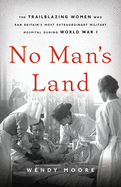
| Publisher: | Basic Books | |
| Genre: | Women, Biography & Autobiography, Medical (Incl. Patients), Military Medicine, Europe, World War I, Great Britain - 20th Century, Medical, History, Military | |
| ISBN: | 9781541672727 | |
| Pub Date: | April 2020 | |
| Price: | $30 |
| History |
by Wendy Moore
No Man's Land: The Trailblazing Women Who Ran Britain's Most Extraordinary Military Hospital During World War I by Wendy Moore (How to Create the Perfect Wife) is the fascinating account of how two women overcame the social boundaries of their times to create an exemplary military hospital--and how those boundaries slammed back into place for the women who worked there when the war ended.
Prior to the war, women doctors were limited to treating women and children. When doctors and suffragettes Flora Murray and Louisa Garrett Anderson offered their services to the British Army, they were rejected immediately. Undeterred, the two women opened, supplied and staffed military hospitals with the support of the French Red Cross, first in Paris and later in Boulogne. Their largely female staff treated hundreds of soldiers wounded on the French battlefields.
Murray and Garrett were so successful that the British Army asked them to establish a hospital in London after they returned to England. The 500-bed, all-female "Suffragette Hospital" treated more than 26,000 patients over the course of four and a half years. It became a model of military medicine, known for the brilliance of its surgeons, its pioneering medical techniques and its understanding that patient morale was as important as medicine.
No Man's Land is a story of feminist aspirations, bureaucratic hurdles overcome, medical innovation, and unexpected freedoms created in the turbulence of war. It is an important and well-written addition to the growing body of forgotten women's history. --Pamela Toler, blogging at History in the Margins

| Publisher: | Bold Type Books | |
| Genre: | Feminism & Feminist Theory, Folklore & Mythology, Social Science | |
| ISBN: | 9781568589350 | |
| Pub Date: | April 2020 | |
| Price: | $26 |
| Social Science |
by Helen Morales
Helen Morales's insightful and thoroughly researched Antigone Rising examines modern society and events through an ancient lens, pushing readers to look at the ways life has been influenced by classic Greek myths. As she says, "Choosing which ancient thinkers to hold up as authorities in the modern world, and how we selectively interpret them, is a politicized business with real-life ramifications."
Morales holds the Argyropoulos Chair in Hellenic Studies at the University of California, Santa Barbara, so it comes as no surprise that she digs beyond surface-level readings of the myths. She examines the context in which they were recorded, and the impact of these stories through the centuries as they've been selectively retold and reimagined. As she details how many of these myths, though perhaps once revolutionary in their time, have been used against women, Morales also makes a compelling case for modern readers to take a closer look--to focus not just on the brutalization of women but on the stories of perseverance, of art as resistance and of women supporting one another. With examples including Beyoncé's overt goddess imagery and an inaptly named "sex strike" in Liberia, she concludes that stories hold an immense power over culture and gender norms, and that changing the stories being told is the path toward justice and peace.
Inclusive of all women and featuring extensive notes and suggested reading, Antigone Rising is a short but powerful call to action for the modern--or mythological--woman. --Suzanne Krohn, editor, Love in Panels
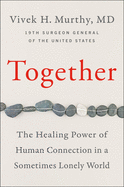
| Publisher: | Harper Wave | |
| Genre: | Self-Help, Personal Growth, Happiness, Psychology, Mental Health, Disease & Health Issues, Interpersonal Relations, Social Science | |
| ISBN: | 9780062913296 | |
| Pub Date: | April 2020 | |
| Price: | $29.99 |
| Psychology & Self-Help |
by Vivek H. Murthy
Together: The Healing Power of Human Connection in a Sometimes Lonely World by Vivek H. Murthy, M.D., addresses the prevalence of loneliness in modern culture and lays out simple, inspirational methods for building the human connections society needs to thrive.
As a newly qualified doctor, Murthy found himself unprepared to treat patients for their most common ailment: loneliness. It was a subject that was never addressed in medical school. Years later, as the U.S. Surgeon General under President Obama, he came to realize that social isolation is the common denominator behind many chronic illnesses and that the fear and mistrust engendered by isolation is partly responsible for some of society's most challenging problems such as opioid addiction, gun violence and political polarization.
Murthy is a compassionate messenger and the healing power of social connection is his rallying cry. He draws from remarkable stories of successful community building efforts across the U.S., as well as his own experience as a child of immigrants to advocate for a new cultural focus that respects individual expression while honoring themes from traditional collectivist societies. The idea is to inspire human connection by creating opportunities for people to meet informally and help their neighbors, share stories and meals and slowly build trust and familiarity. A city-wide kindness initiative started by former Mayor Tom Tait of Anaheim, Calif., is a potent example of how one motivated individual can heal and transform entire neighborhoods.
Together is a timely guide packed with uplifting anecdotes that will resonate with and galvanize those who wish for more warmth and genuine friendships within their communities. --Shahina Piyarali, writer and reviewer
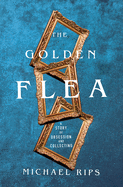
| Publisher: | W.W. Norton | |
| Genre: | Biography & Autobiography, Industries, Art, Antiques & Collectibles, Personal Memoirs, Business & Economics, General, Retailing | |
| ISBN: | 9781324004073 | |
| Pub Date: | April 2020 | |
| Price: | $26.95 |
| Starred | Art & Photography |
by Michael Rips
Michael Rips grew up viewing most objects as contaminated: "The antique was a cesspool, and flea markets its tributary." His wife's family enjoyed garage sales, and one weekend he was forced by the heat to leave the car where he was waiting. The poster he discovered at the sale began his transition from artifact abhorrer to dedicated denizen of the famed market in Manhattan's Chelsea neighborhood, the subject of his fascinating memoir, The Golden Flea.
To understand Rips's journey, one must understand the history and allure of "the flea." A staple in New York, the constellation of secondhand markets is among the best known, "widely regarded for the treasures to be found there." It rose from the vacuum left by the garment industry, which filled with the underground clubs, prostitutes, artists and junkies that flowed into the neighborhood in the '60s and beyond.
The flea was a meeting place for the various elements of Chelsea, where rare yet inexpensive items could be found to decorate apartments or provide inspiration, and people could display, create and re-create themselves. The colorful history of the neighborhood, the flea and the items sold there almost pale in comparison to the sellers, pickers and buyers that populate it. These people became part of the fabric of Rips's life, even as he needed to step away due to more than a tinge of obsession. Discovering the flea through Rips's experience is magnificent, but the human influence on the transactions ("Do you know what this is made of?" "It's made of get-the-f*ck-out-of here.") give it true beauty. --Lauren O'Brien of Malcolm Avenue Review
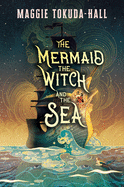
| Publisher: | Candlewick Press | |
| Genre: | Fantasy, Romance, Young Adult Fiction, Mermaids, Historical, LGBT | |
| ISBN: | 9781536204315 | |
| Pub Date: | May 2020 | |
| Price: | $18.99 |
| Starred | Children's & Young Adult |
by Maggie Tokuda-Hall
In this shimmering, swashbuckling fantasy, the fates of Flora, a poor orphan, and Evelyn, an Imperial noble, intertwine as each struggles to find her place in a grim and opportunistic world overseen by the brutal Nipran Empire.
Ever since Flora killed a man to prove herself worthy of a pirate's life aboard the Dove, she's been accepted by the crew as Florian, "something better than a girl." The Dove masquerades as a passenger ship, and its murderers and rapists trick "stiff-legged landsmen" aboard, then sell them into slavery. Desperate to escape to a better life, Flora and brother Alfie save all their meager wages--until Alfie blows all of their money on that forbidden "oblivion drink," mermaid's blood. When the Dove takes on a group of wealthy Imperials, Flora is given the task of guarding the virginal Lady Evelyn Hasegawa so she may be sold--intact--to work as a "slave-whore" on the Red Shores. Although Flora sees Evelyn as a typical spoiled Imperial, she is impressed by the compassion Evelyn shows when she uses her own blood to keep a captured mermaid alive. And the Sea, mother to all mermaids, notices, too.
Maggie Tokuda-Hall (Also an Octopus) has crafted a brooding, magical adventure with a healthy dose of intrigue. Her prose is delightful, by turns delicate and brutal, as her plot demands. At the heart of this tale about learning when to stand out and when to blend in, lies the importance, imparted by first mate Rake, of "know[ing] your truth, not your story." --Lynn Becker, blogger and host of Book Talk, a monthly online discussion of children's books for SCBWI
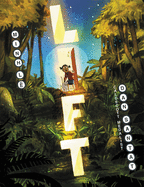
| Publisher: | Little, Brown Books for Young Readers | |
| Genre: | Fantasy & Magic, Family, Imagination & Play, Juvenile Fiction, Siblings | |
| ISBN: | 9781368036924 | |
| Pub Date: | May 2020 | |
| Price: | $17.99 |
| Children's & Young Adult |
by Minh Lê, illust. by Dan Santat
Asian-American author-illustrator duo Minh Lê and Caldecott medalist Dan Santat (Drawn Together) reunite in this jubilant ode to sibling bonds and the magic of elevator buttons.
Lê's brilliantly simple plot provides the framework for the tension between the real and imagined world of Iris, a girl with spunky pigtails and spiky bangs. Pushing the elevator button in her family's building is Iris's calling, and she loves her work. When her observant toddler sibling steals her job, their parents rejoice while Iris feels betrayed. A lucky chance provides her with her very own discarded single-button panel, which she tapes next to her closet door. When she wishes herself away and presses the button, Iris discovers it can turn her closet door into a portal to a tiger's lush jungle lair or a deserted space station high above Earth. As she hovers in starlit isolation, though, Iris hears her sibling crying through her spacesuit's radio and realizes "everyone can use a lift sometimes."
The minimalist text gives structure to Santat's illustrations of a bold and entrancing world. A mix of comic panels and full-page spreads create suspenseful page turns with gratifying payoffs. Light from the opening closet door stripes Iris's astonished face as she sees the scenes before the reader. Her expressions convey emotion beautifully, her eyes wide with wonder at the stars or stormy as her baby sibling pushes her buttons. Older siblings may relate to her frustration, but the central message that patience and inclusion yield their own rewards should resonate with young readers regardless of birth order. Bold and genuine, Lift is pure spirit-raising magic. --Jaclyn Fulwood, youth services manager at Main Branch, Dayton Metro Library